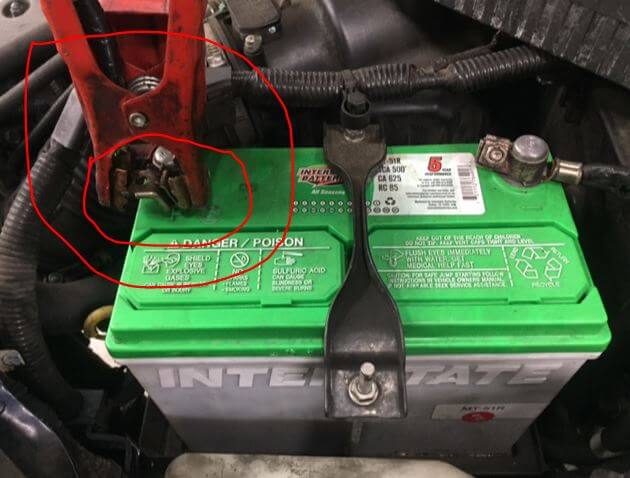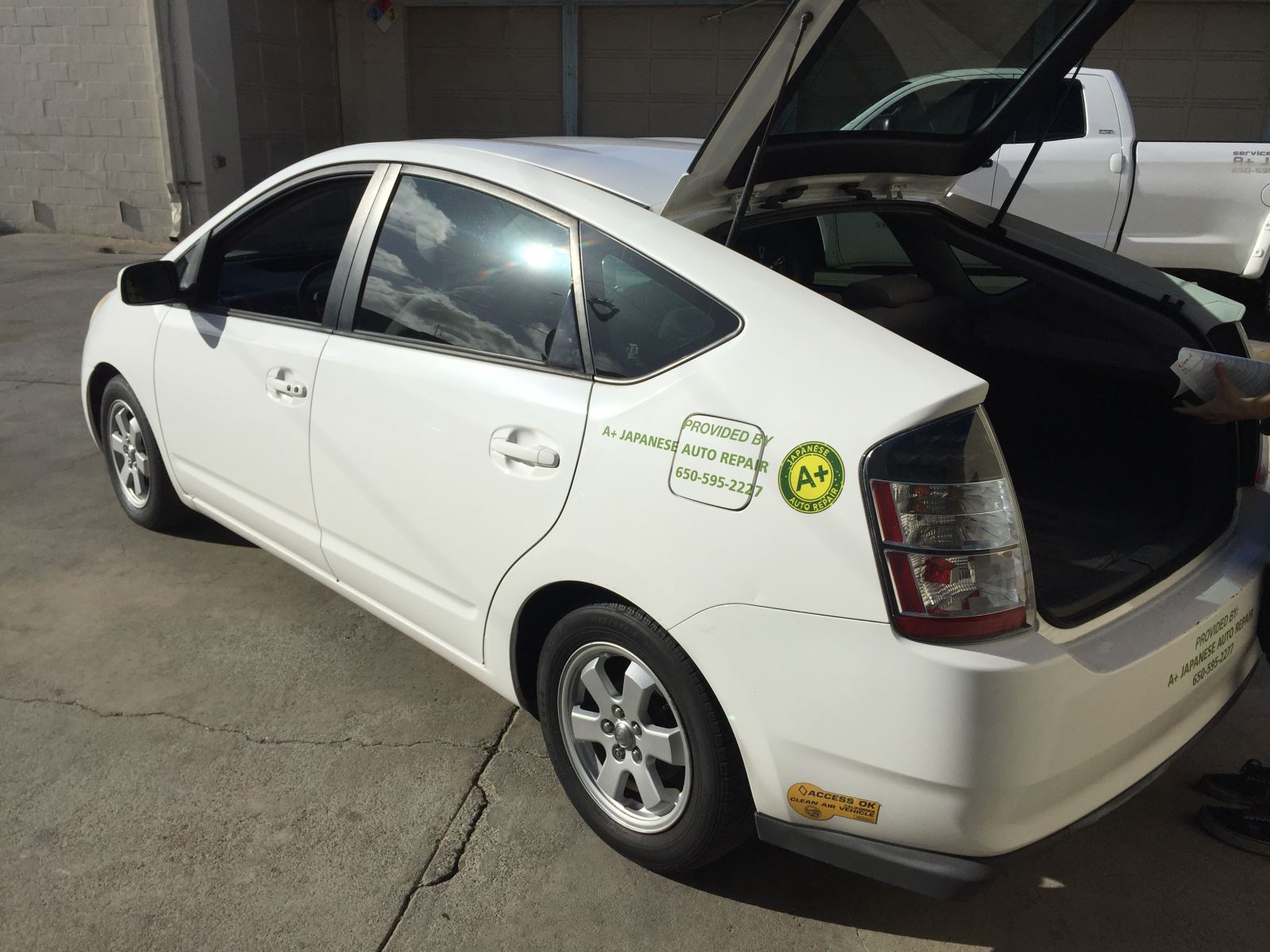Posted on 10/28/2016

Learn How To Properly Jump Start A Dead Battery A dead battery will probably leave you stranded at least once in your life so it is important to learn how to properly jump-start a dead battery. There are two common methods to jumpstart a dead battery. You can use the traditional battery jumper cables or a newer battery jumper pack. Each method requires a similar process but with the battery jumper cables, you will need a vehicle or another 12-volt battery. The 8 Steps To Jump-Start A Dead Car Battery 1. Turn the ignition key off before making any connections. (if you are using battery jumper cables, leave one car running and remove the key from the dead car. Then make sure none of the jumper battery cable ends touch each other or any painted area of the car.) 2. Clamp the positive (red +) clamp onto the vehicle (red +) battery post. If you can't find the battery there will probably be a connection point under the hood ... read more
Posted on 8/21/2016

What does the battery light mean on my dash ? If the battery light comes on your dash which you are driving, that means there is a problem with the car's charging system. About 90% of the time, the alternator is under or over charging the battery. You probably have less than 15 minutes before the car will stop running. Can you drive with the battery light on? You can drive the car with the battery light on but you will only have on average 15 minutes. After roughly 15 minutes, your car will run out of electrical power and the car will stall. What can you do when the battery light comes on while driving? Since the vehicle is only running on the power that is remaining in your car's battery, you will want to turn off all electrical components that allow you to still safely operate the car. Depending on the battery condition and the electrical loads on your system, you probably have about 10-20 minutes of driving until your vehicle ... read more
Posted on 7/12/2016
Learn if your small SUV headlights properly illuminate the road A recent study by the by the Insurance Institute for Highway Safety has concluded that many SUV do a poor job of illuminating the road. Among the 21 small SUVs that were tested, there were over 41 different available lighting options. They included halogen, HID, LED, Adaptive Headlights and a few other options manufacture options. The Insurance Institute used a headlight rating system which included acceptable, marginal, and poor. The Institutes rating system is different from the government agency which regulates headlight standards. In the government agency, they rate headlights in the lab for output and angle. In this study, they headlights are studied for illumination in real world situations. “Acceptable” ratings were given to the Ford Escape, Honda CR-V, Hyundai Tucson, and the Mazda CX-3. Each of these vehicles had been tested with the highest lighting package available. A few ... read more
Posted on 7/11/2016
How long should my car battery last? Car batteries last anywhere from 3-6 years based on the size, quality, location, and the type of battery. Flooded Lead Acid Car Battery Most car batteries are still using lead acid flooded batteries. The battery consists of lead plates, an acid solution in which the plates are flooded, positive/negative terminals, and a plastic housing which holds it all together. Lead is known as a toxic agent and it will effect ones health but the battery companies still use lead. It’s a great material for maintaining a batteries’ charge, accepting a new charge, and the more lead a battery uses, usually the more energy it’s capable to hold. Size Of The Battery, Bigger is Usually Better The size of a car battery is rated to the amount of the Cold Cranking Amps that a car requires to start. A larger battery will typically last longer than a smaller battery but it certainly depends ... read more
Posted on 6/23/2016

Paul knows Toyota & Lexus Paul is our head Toyota and Lexus technician. For over 11 years, Paul has been a Master technician with A+ Japanese Auto Repair in San Carlos focusing on Toyota and Lexus products. Many of the cars he works with daily includes Toyota Sienna Mini Vans, Toyota Corolla, Toyota Highlanders as well as the other vehicles on the Toyota line. Most of the Toyota vehicles that he repairs require not much more than service items. Those items might be brakes, timing belts, major and minor services, electrical diagnostic, air conditioning, and check engine light work. With amount of experience & training that he has on these vehicles, he is one of the top technicians in the San Francisco Bay Area. And of course Lexus. Lexus is actually owned by the Toyota corporation. Lexus is the higher end line for Toyota but they really share quite a few parts and posses the ... read more
Posted on 6/13/2016
If you bring your car to Jiffy Lube for service, you should follow this article. After a 3 year investigation, the California Bureau of Auto Repair has found several violations against a northern CA family owned chain of Jiffy Lube stations. The investigation is on going but we want all customers to be aware of what's out there. Brought to you by: San Francisco (KGO) State undercover agents say they've found a pattern of fraud at dozens of Bay Area Jiffy Lubes -- all operated by a family franchise. In a story exclusive to ABC7 News, state investigators claim those locations have been selling services customers don't need. (KGO-TV) http://abc7news.com/news/state-undercover-agents-allege-pattern ... read more
Posted on 5/31/2016
Are counterfeit parts being installed on my car? At A+ Japanese Auto Repair, we take pride in installing the best parts on your car and was deeply disturbed by this recent article regarding counterfeit parts. There was a recent seizure by Australian authorities of counterfeit Toyota parts. This issue seems to be showing up more and more in the world of products, not just automotive parts. The parts that we seized ranged from oil filters to air bags. The issue that we see with this, besides the obvious moral issues, is the lack in quality control. People count on parts everyday for reliability as well as their safety. Read more about this issue below... http://www.caradvice.com.au/448539/counterfeit-toyota-parts-destined-for-australia-seized-in-chinese-raid ... read more
Posted on 12/31/2015
With the cold days upon us, we wanted to share 4 easy and safe ways to remove ice off your window. Before you begin any of the below steps, do this: If your vehicle is parked in a well ventilated area, start the car, roll down your driver's side window (so you don't get locked out of the car), and turn the heater on to the defrost setting. Then turn the rear window defrost to the on position. 1. The Makeshift Ice Scraper Save an old credit card or gift card in your wallet. Place the longer edge against your glass starting from the top of the window and scrape the ice down. After you are done with the whole window, lift the wiper blades up and scrape the ice slush off the car. All done! 2. Water makes (Almost) everything Better With this method, be careful of two things... the outside temperature and the temperature of the water. If the outside temperature is too cold (32* F or below), you will build up more ice. If the water is too hot (anything ... read more
Posted on 11/8/2015
.JPG)
When do you need to change a hybrid battery? Let's explore the options on changing a Hybrid battery pack We were recently working on a Toyota Prius at our shop, A+ Japanese Auto Repair, and it needed a hybrid battery pack replacement. We thought this would be a good time to share a few photos and tell you a little bit more about hybrid battery packs. A hybrid battery pack is made up of several batteries connected by a series of connections. The voltage at each cell can range from 9 volts and higher. The hybrid computer monitors two cells at a time and compares the voltages to all of the other paired cells. If there are a pair of batteries that are too far away from one another in the voltage category then the computer will set a trouble code in the hybrid battery computer. There are some companies that will remove the battery pack from the car and only replace the battery cells which&nbs ... read more
Posted on 11/3/2015

How To Change A Flat Tire Each car has a different approach to change a spare tire. This is a general procedure to change a flat tire on most cars or trucks. 1. Get your vehicle to a flat safe spot Find a location away from danger and fast moving traffic. It is okay to drive the vehicle for a short distance on a flat tire. Turn your hazard lights on, drive slow, and avoid sudden acceleration, turns, or braking. 2. Find the location of the tools you need to change the spare hydraulic jack (to lift the vehicle) tools to remove the spare tire (if needed) tire wrench (to remove and tighten the lug nuts on the tire) 3. Find the location of your spare tire and remove it Usually located in the trunk, under the rear of the vehicle, or in some mini vans the spare tire is located under the middle row seat. 4. Set the parking brake and put the vehicle i ... read more